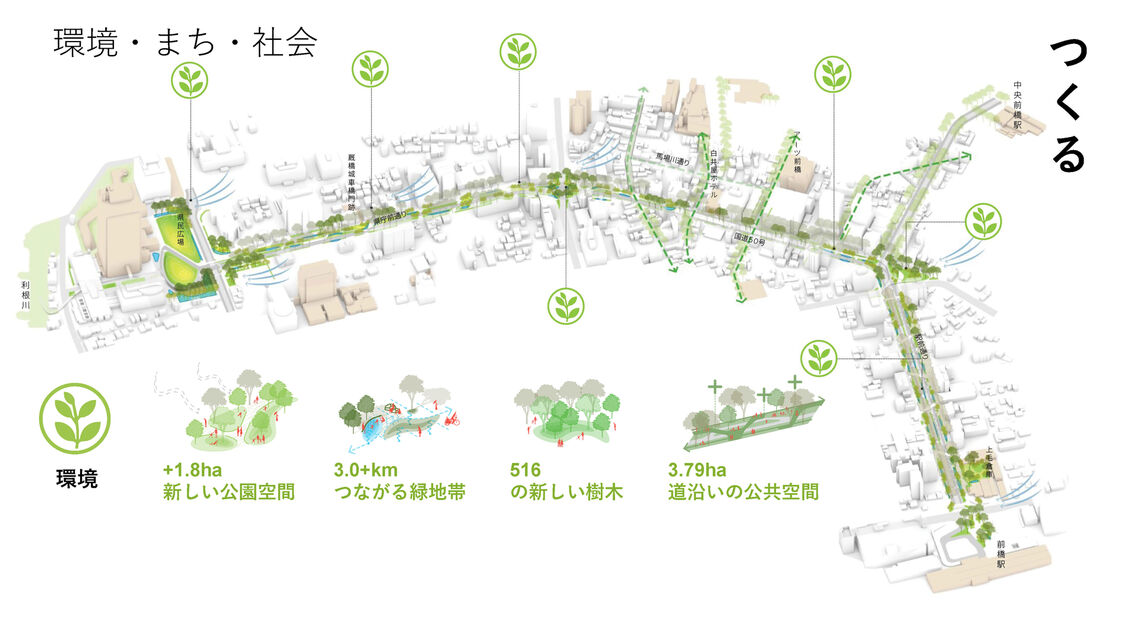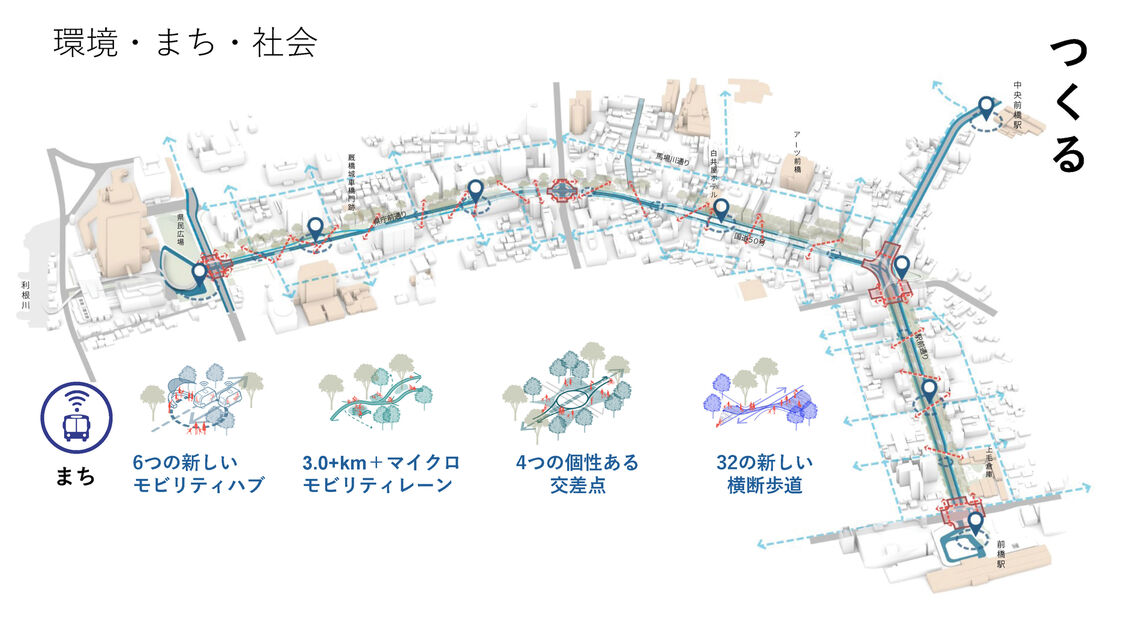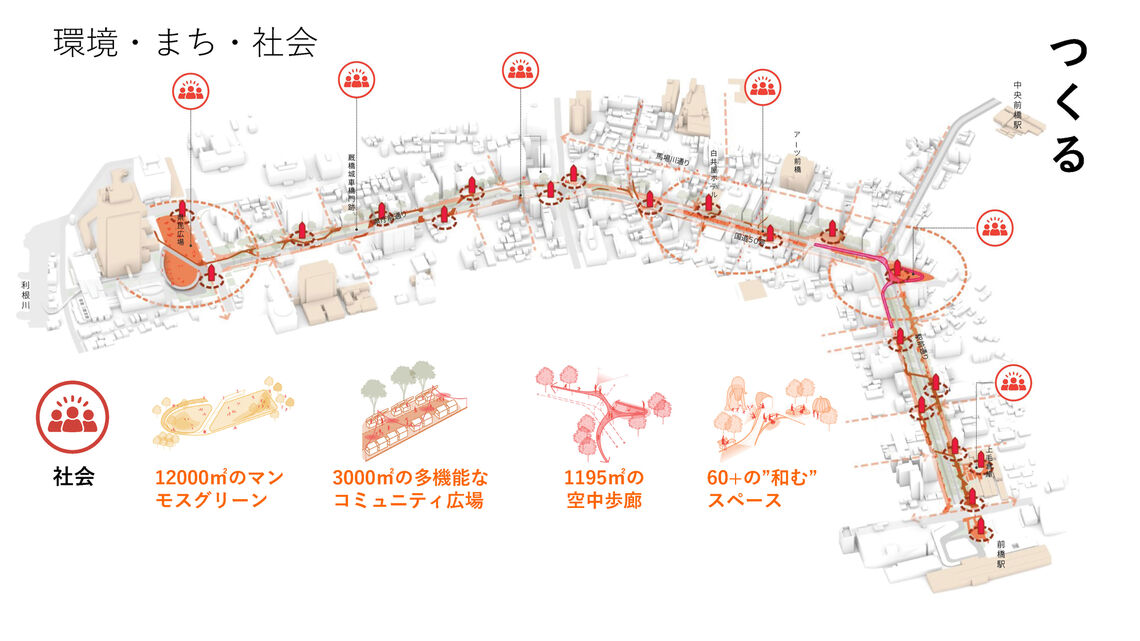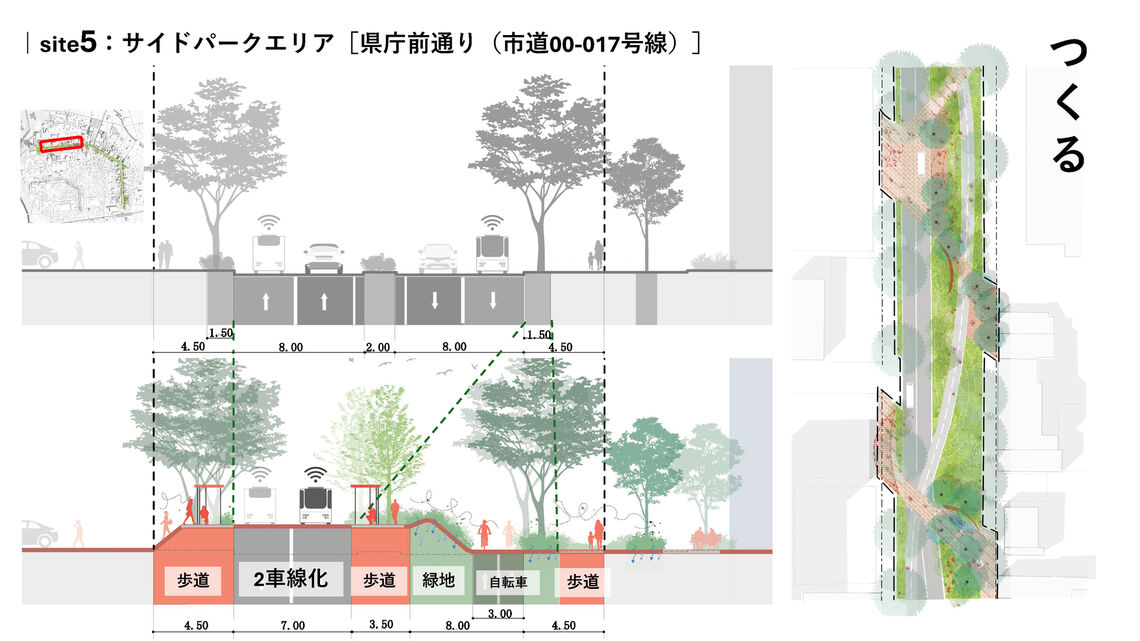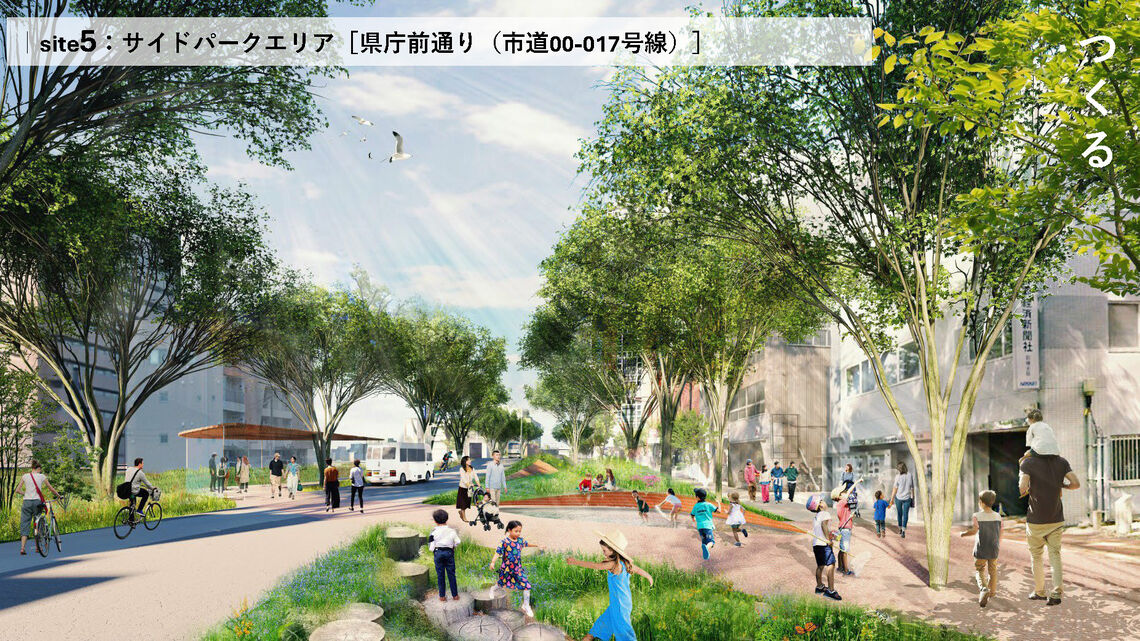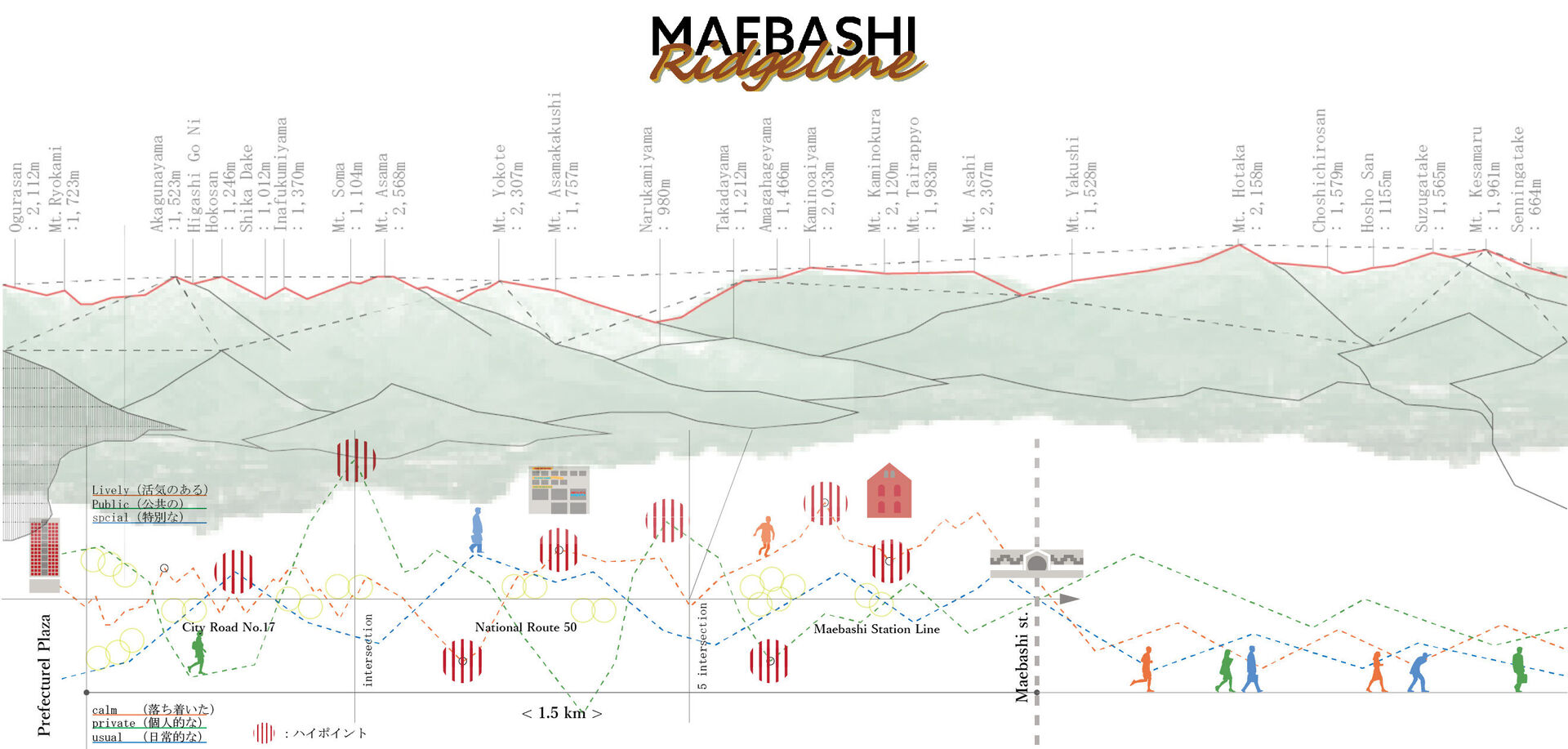Gunma Prefecture recently announced the winning proposal for the Maebashi Creative City International Design Competition—Maebashi Ridgeline: Urban Development Connected by Ridgelines—a vision jointly developed by WRT and international collaborators Mt. Fuji Architects Studio (Japan), Systematica (US / Italy), Sanyo Consultants (Japan), and Fukken Technology (Japan). The multidisciplinary team’s design was selected from thirteen international entries, five of which advanced to a public exhibition and final review.
The project reimagines a 1.5 km stretch of Maebashi’s central spine as a vibrant, pedestrian-oriented corridor anchored in nature, culture, and community. Drawing inspiration from the surrounding mountain ranges, including Mt. Akagi, the “Ridgeline” vision weaves together smart mobility systems, ecological infrastructure, and public realm activation to promote revitalization, adaptation, and wellbeing.
“This recognition reflects the strength of an interdisciplinary process that integrates mobility, culture, nature, and lived experience,” said Keiko Tsuruta Cramer, ASLA, PLA, Principal at WRT. “We’re honored to contribute to this vision rooted in community values and finding joy in the everyday.”
The proposal balances long-term ecological resilience with social cohesion. Green infrastructure strategies are layered throughout the design to increase biodiversity, improve air quality, and mitigate urban heat. The corridor is structured to support automated transit systems and active mobility while preserving civic flexibility and public space. Through spaces such as pocket parks, mobility hubs, and shared gathering areas, the design creates a framework for everyday encounters, cultural expression, and economic activity.
The proposal was praised by the jury for its ability to reflect Maebashi’s unique character, landscape, and aspirations for the next 100 years. In particular, the design’s sensitivity to both ecological and social systems, and the emphasis on civic participation, were noted as key strengths.
The team will move into schematic design in coordination with local and national agencies, with design completion anticipated by the end of fiscal 2025.
WRT’s team included Keiko Tsuruta Cramer, Jared Edgar McKnight, Ziwei Wang, Yue Hu, Yangyi Li, and Ruoxin Jia, working in close partnership with the full international design team.
